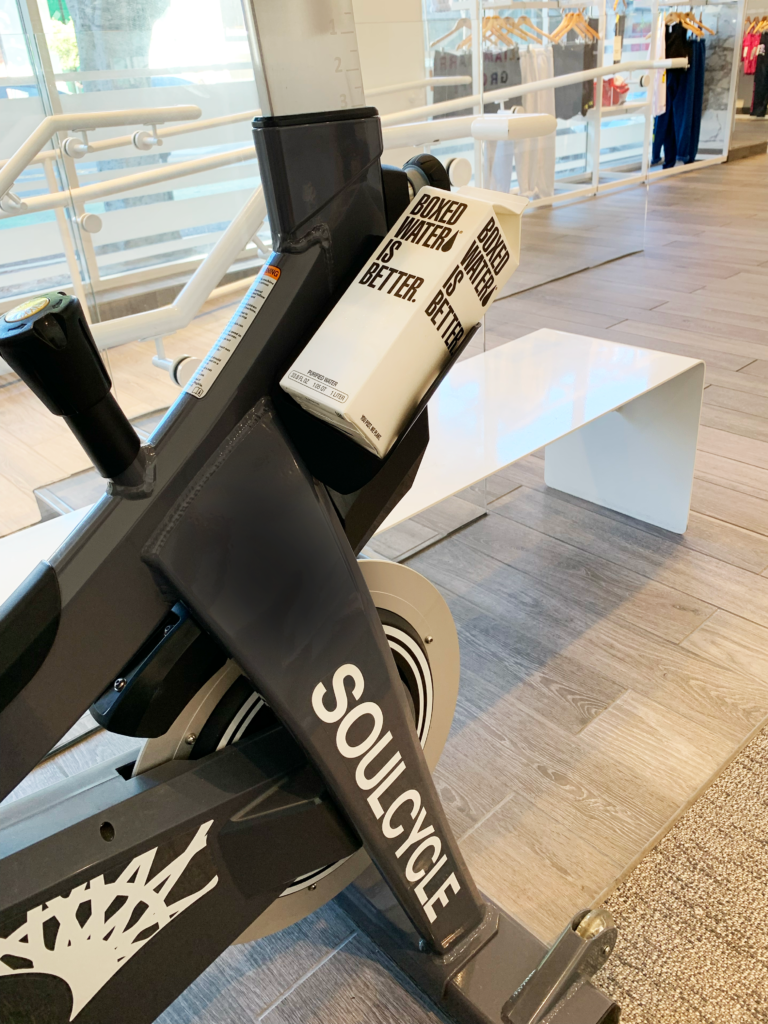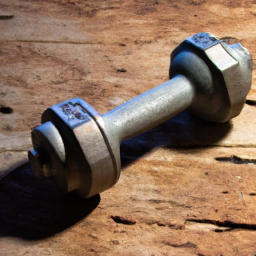So you’ve decided to take charge of your fitness and create a workout routine that is tailored to your specific goals? That’s awesome! In this article, we’ll guide you through the process of creating a customized workout routine that is designed to help you achieve the results you want. Whether you’re looking to build muscle, lose weight, or improve your overall fitness level, we’ve got you covered.
Stay tuned to find out how to break down your fitness goals, choose the right exercises, set a realistic schedule, and track your progress along the way. We’ll also provide valuable tips on how to stay motivated and make adjustments to your routine as needed. By the end of this article, you’ll have all the tools you need to create a personalized workout plan that will keep you on track and help you reach your fitness goals. So let’s get started! When it comes to your fitness journey, having clear and specific goals is essential. Determining your fitness goals is the first step towards creating a customized workout routine that will deliver the results you desire. In this article, we will guide you through the process of assessing your current fitness level, identifying your specific goals, and setting realistic and achievable targets.
Assessing your current fitness level
Before you can embark on your fitness journey, it’s important to assess your current fitness level. This will give you a baseline from which to measure your progress and determine the areas that need the most improvement.
To assess your current fitness level, you can perform various tests such as measuring your cardiovascular endurance, muscular strength and endurance, and flexibility. You can also consider factors such as your body composition and overall health.
By understanding where you currently stand, you can tailor your workout routine to address your specific needs and weaknesses.
Identifying your specific fitness goals
Once you have assessed your current fitness level, the next step is to identify your specific fitness goals. What do you want to achieve through your workouts? Do you want to lose weight, build muscle, improve cardiovascular endurance, or enhance flexibility and mobility?
It’s important to set clear and specific goals that are attainable within a reasonable timeframe. Aiming for unrealistic or vague goals may lead to frustration and disappointment, ultimately derailing your fitness journey.
Setting realistic and achievable goals
After identifying your specific goals, it’s crucial to set realistic and achievable targets. The key is to break down your overall goal into smaller milestones that can be measured and tracked.
For example, if your goal is to lose weight, you can set a target of losing one to two pounds per week. If your goal is to build muscle, you can aim to increase your strength by a certain percentage or lift heavier weights.
Setting realistic goals not only keeps you motivated but also allows you to celebrate small victories along the way, boosting your confidence and commitment.

Understanding Different Types of Exercise
Now that you have determined your fitness goals, it’s important to understand the different types of exercises that can help you achieve them. A well-rounded workout routine typically includes cardiovascular exercises, strength training exercises, and flexibility and mobility exercises.
Cardiovascular exercises
Cardiovascular exercises, also known as aerobic exercises, are activities that increase your heart rate and improve your cardiovascular endurance. These exercises help burn calories, improve lung capacity, and strengthen your heart.
Examples of cardiovascular exercises include running, cycling, swimming, dancing, and using cardio machines such as treadmills, ellipticals, or rowing machines.
When choosing cardiovascular exercises, consider activities that you enjoy and can sustain for a prolonged period. This will keep you motivated and ensure that you stick to your routine.
Strength training exercises
Strength training exercises, also known as resistance training or weightlifting, involve working out with weights or resistance to build muscle strength and endurance. These exercises help tone and sculpt your muscles, increase bone density, and boost metabolism.
Examples of strength training exercises include weightlifting, bodyweight exercises, resistance band workouts, and using weight machines at the gym.
When selecting strength training exercises, focus on targeting specific muscle groups. This will help you achieve a balanced physique and prevent muscle imbalances or injuries.
Flexibility and mobility exercises
Flexibility and mobility exercises are essential for maintaining joint health, improving posture, and preventing injuries. These exercises focus on increasing the range of motion in your joints and lengthening tight muscles.
Examples of flexibility and mobility exercises include static stretches, dynamic stretches, yoga, Pilates, and foam rolling.
Incorporating these exercises into your routine will not only improve your overall flexibility but also enhance your performance in other workouts and daily activities.
Choosing the Right Exercises for Your Goals
Now that you have a basic understanding of the different types of exercises, it’s time to choose the right exercises that align with your fitness goals. It’s important to select exercises that are effective in targeting specific muscle groups, improving cardiovascular fitness, and enhancing flexibility and mobility.
Selecting exercises that target specific muscle groups
Whether your goal is to build muscle or tone specific areas of your body, it’s important to choose exercises that target the intended muscle groups. This will ensure that you are maximizing your workout and achieving the desired results.
For example, if you want to build your upper body strength, exercises such as push-ups, bench presses, and rows will target your chest, shoulders, and back muscles. If you want to tone your glutes and legs, exercises such as squats, lunges, and deadlifts will be more effective.
Incorporating exercises that improve cardiovascular fitness
Regardless of your specific fitness goals, it’s important to include exercises that improve your cardiovascular fitness. This will not only enhance your overall health but also help you burn calories and increase your endurance.
Incorporate cardiovascular exercises such as running, cycling, or swimming into your routine. You can also try high-intensity interval training (HIIT), which alternates between periods of intense activity and recovery. This type of training has been shown to be highly effective in improving cardiovascular fitness in a shorter amount of time.
Including exercises for flexibility and mobility
In addition to strength and cardiovascular exercises, don’t forget to include exercises that focus on flexibility and mobility. These exercises will help you improve your range of motion, prevent injuries, and enhance overall performance.
Incorporate static stretches, dynamic stretches, yoga, or Pilates into your routine. You can also use foam rollers or massage balls to release tight muscles and improve mobility.
By including exercises from each category, you will create a well-rounded workout routine that targets various aspects of fitness and ensures balanced muscular development.

Designing Your Workout Schedule
Now that you have selected the right exercises for your goals, it’s time to design your workout schedule. A well-designed schedule will ensure that you are incorporating all the necessary exercises and allowing for proper rest and recovery.
Creating a balanced routine that includes all exercise types
When designing your workout schedule, aim for a balanced routine that includes all the different types of exercises – cardiovascular, strength training, and flexibility/mobility.
Distribute your exercises throughout the week, making sure to give equal attention to each category. For example, you can dedicate three days to strength training, two days to cardiovascular exercises, and two days to flexibility and mobility exercises.
Establishing the frequency and duration of your workouts
When establishing the frequency of your workouts, consider your current fitness level and time availability. Aim for at least three to five workouts per week to see significant results.
Each workout should last between 30 and 60 minutes, depending on the intensity and your individual goals. Remember that quality is more important than quantity, so focus on proper form and technique during each exercise.
Allowing for rest and recovery days
Rest and recovery days are just as important as your workout days. These periods allow your muscles to repair and rebuild, reducing the risk of overuse injuries and burnout.
Include one to two rest days per week in your schedule. On these days, focus on light activities such as gentle stretching, walking, or engaging in hobbies that promote relaxation and stress reduction.
By designing a well-balanced workout schedule that incorporates all exercise types and allows for adequate rest, you will maximize your progress and minimize the risk of injury or exhaustion.
Customizing Your Workout Routine by Fitness Level
Now that you have a solid foundation for your workout routine, it’s important to customize it based on your fitness level. Modifying exercises to suit your current capabilities, progressing your workouts as you become fitter, and incorporating variety will ensure continued progress in your fitness journey.
Modifying exercises for beginners, intermediate, and advanced levels
If you are a beginner, it’s important to start with exercises that are appropriate for your fitness level. Begin with lighter weights or bodyweight exercises and gradually increase the intensity and resistance as you become stronger.
Intermediate and advanced exercisers can incorporate more challenging exercises or increase weights and repetitions to continue challenging their fitness level and stimulate muscle growth.
Remember to always prioritize proper form and technique, regardless of your fitness level. This will prevent injuries and ensure maximum effectiveness of your workouts.
Progressing your workouts to challenge your fitness level
As your fitness level improves, it’s important to progress and challenge yourself to continue seeing results. This can be done by increasing weights, repetitions, or intensity.
For example, if you are weightlifting, gradually increase the amount of weight you lift or the number of repetitions you perform. If you are doing cardiovascular exercises, progressively increase your speed, distance, or intensity.
Progressing your workouts in a controlled and gradual manner will prevent plateaus and keep your body adapting and improving.
Incorporating variety and avoiding plateaus
To prevent boredom and ensure continued progress, it’s important to incorporate variety into your workout routine. This can include trying different exercises, using different equipment, or participating in fitness classes or programs.
Variety not only keeps your workouts interesting but also challenges different muscle groups and energy systems, leading to enhanced overall fitness.
By customizing your workout routine to your fitness level, continuously progressing your workouts, and incorporating variety, you will keep your fitness journey exciting and ensure continued improvement.

Tracking Your Progress and Making Adjustments
To stay motivated and ensure that your workout routine is delivering the desired results, it’s important to track your progress and make necessary adjustments along the way.
Keeping a workout journal to track your exercises and progress
Keeping a workout journal is a great way to track your exercises, sets, repetitions, weights, and overall progress. This will allow you to see how far you’ve come, identify areas that need improvement, and make adjustments accordingly.
In your workout journal, you can also record how you feel after each session, note any challenges or breakthroughs, and reflect on your overall fitness journey.
Evaluating your results and making necessary adjustments
Regularly evaluate your results to determine if your current workout routine is effective in helping you achieve your goals. Assess factors such as your weight, body measurements, strength levels, endurance, and overall well-being.
If you are not seeing the desired results or feel that you have reached a plateau, it may be time to make necessary adjustments. This can include changing your exercises, increasing the intensity, or altering the frequency and duration of your workouts.
Remember that fitness is a journey, and what works for one person may not work for another. Be open to experimentation and adjust your routine as needed to ensure continued progress.
Periodically reassessing your fitness goals
As you progress in your fitness journey, it’s important to periodically reassess your goals. What may have seemed challenging or unattainable in the beginning may now be within reach.
Adjust your goals accordingly, creating new targets that align with your current capabilities and aspirations. Reassessing your fitness goals will help you stay motivated and continue pushing yourself to new heights.
Seeking Professional Guidance
While designing and customizing your workout routine can be done on your own, seeking professional guidance can provide additional support, expertise, and accountability.
Consulting with a certified fitness trainer
A certified fitness trainer can assess your current fitness level, help you set realistic goals, and design a workout routine tailored to your specific needs. They can also provide guidance on proper form and technique, ensuring that you are performing exercises safely and effectively.
Working with a fitness trainer also provides accountability and motivation, as they can track your progress, push you beyond your limits, and adjust your routine as needed.
Working with a nutritionist for dietary recommendations
In addition to exercise, proper nutrition plays a crucial role in achieving your fitness goals. Working with a nutritionist can help you develop a balanced and sustainable eating plan that supports your workouts and maximizes your results.
A nutritionist can assess your current diet, recommend appropriate calorie intake, and provide guidance on macronutrient distribution. They can also help you navigate common dietary challenges and develop strategies for consistent and healthy eating habits.
Joining fitness classes or programs for guidance and motivation
Joining fitness classes or programs can provide structure, guidance, and motivation in your fitness journey. Whether it’s a group exercise class, bootcamp, or online training program, these offerings can help you stay accountable and push yourself to new limits.
Fitness classes and programs often have experienced instructors or trainers who can lead you through workouts, provide modifications when needed, and create a supportive and motivating environment.
Staying Motivated and Overcoming Challenges
Staying motivated and overcoming challenges are essential for long-term success in your fitness journey. Here are some strategies to help you stay on track and committed to your goals.
Setting short-term goals to stay focused and motivated
While long-term goals are important, setting short-term goals can provide immediate focus and motivation. Break your larger goals into smaller milestones that you can achieve within a few weeks or months.
Celebrate each milestone as you achieve it, rewarding yourself with non-food related treats or incentives. This will keep you motivated and excited to continue working towards your ultimate fitness goals.
Finding a workout buddy or support system for accountability
Having a workout buddy or support system can provide accountability and motivation. Find a friend, family member, or coworker who shares similar fitness goals and can join you in your workouts.
Having someone to exercise with can make your workouts more enjoyable, provide friendly competition, and keep you accountable to your routine. You can also share your successes and challenges with each other, creating a support system that boosts motivation and commitment.
Implementing strategies to overcome common workout obstacles
Life can sometimes get in the way of our fitness routines. It’s important to anticipate common obstacles and implement strategies to overcome them.
If time is a constraint, consider waking up earlier or finding pockets of time during your day to fit in a quick workout. If you struggle with consistency, schedule your workouts in advance and treat them as non-negotiable appointments with yourself.
Prepare for potential obstacles such as lack of motivation or energy by having a backup plan. This can include creating a motivational playlist, watching inspiring workout videos, or trying new exercises to keep things interesting.
By being proactive and finding strategies to overcome common obstacles, you will stay committed to your routine and overcome any challenges that come your way.
Incorporating Lifestyle Factors into Your Routine
When creating a customized workout routine, it’s important to consider your lifestyle factors and make adjustments accordingly. By considering factors such as your daily schedule, time availability, and creating a conducive workout environment, you can ensure that your fitness journey seamlessly integrates into your life.
Considering your daily schedule and time availability
Evaluate your daily schedule and identify the best times to fit in your workouts. Consider factors such as work commitments, family obligations, and personal preferences.
Some people prefer working out in the morning to energize their day, while others find evening workouts a great way to de-stress and unwind. Find a time that works best for you and commit to it consistently.
Fitting exercise into your lifestyle
Incorporating exercise into your lifestyle goes beyond scheduled workouts. Look for opportunities to be active throughout your day, such as taking the stairs instead of the elevator, walking or biking instead of driving for short distances, or incorporating physical activity into your leisure activities.
By fitting exercise into your daily life, you will not only increase your overall activity level but also create a sustainable and enjoyable routine.
Creating a conducive workout environment
Creating a supportive and conducive workout environment can greatly enhance your motivation and enjoyment during exercises. Find a space that is comfortable and clutter-free, with good ventilation and natural lighting if possible.
Invest in quality workout gear and equipment that makes you feel confident and motivated. This can include comfortable workout clothes, supportive shoes, and any necessary equipment such as weights or resistance bands.
Personalize your workout environment by playing your favorite music, hanging motivational quotes or photos, or using scents or aromatherapy to create a positive and energizing atmosphere.
By creating a workout environment that caters to your preferences and needs, you will look forward to your workouts and enjoy the process of achieving your fitness goals.
Conclusion
Creating a customized workout routine based on your fitness goals is an exciting and empowering process. By assessing your current fitness level, identifying your specific goals, and setting realistic targets, you lay the foundation for success.
Understanding the different types of exercises – cardiovascular, strength training, and flexibility/mobility – allows you to choose the right exercises that align with your goals. Designing a well-balanced workout schedule, customizing your routine based on your fitness level, and tracking your progress ensure continued progress and results.
Seeking professional guidance, staying motivated, and incorporating lifestyle factors into your routine further optimize your fitness journey.
Remember, fitness is a journey, not a destination. Stay committed, embrace the process, and celebrate every step towards a healthier and stronger you.


